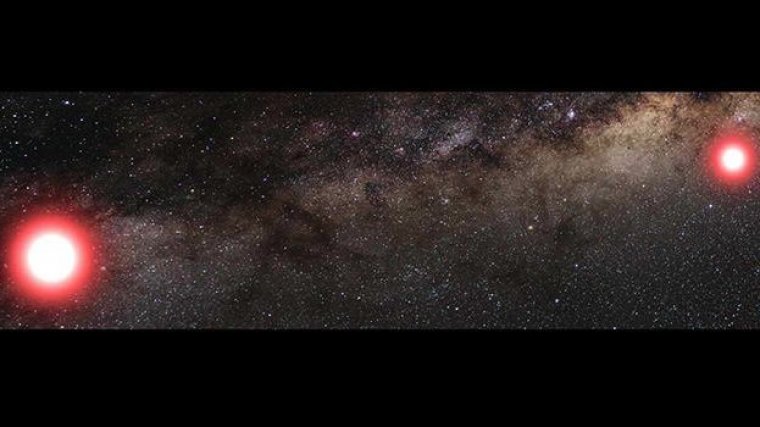| News / Science News |
Newfound Frozen World Orbits in Binary Star System
NASA | JULY 5, 2014
A newly discovered planet in a binary, or twin, star system located 3,000 light-years from Earth is expanding astronomers' notions of where Earth-like -- and even potentially habitable -- planets can form, and how to find them.

This artist's rendering shows a newly discovered planet (far right) orbiting one star (right) of a binary star system. Image Credit: Cheongho Han, Chungbuk National University, Republic of Korea
At twice the mass of Earth, the planet orbits one of the stars in the binary system at almost exactly the same distance at which Earth orbits the sun. However, because the planet's host star is much dimmer than the sun, the planet is much colder than Earth -- a little colder, in fact, than Jupiter's icy moon Europa.
This is the first evidence that terrestrial planets can form in orbits similar to Earth's, even in a binary star system where the stars are not very far apart. Although this planet itself is too cold to be habitable, the same planet orbiting a sun-like star in such a binary system would be in the so-called "habitable zone" -- the region where conditions might be right for life.
This greatly expands the potential locations to discover habitable planets in the future. Half the stars in the galaxy are in binary systems.
Earlier evidence that planets form in binary star systems came from NASA's Kepler and Spitzer space telescopes, but the planets and dust structures in those studies were not similar to those of Earth.
The technique astronomers use to find the planet, called OGLE-2013-BLG-0341LBb, is called gravitational microlensing. In this method, the light of a distant star is magnified by a closer star that happens to pass in front -- if a planet is also present around the foreground star, it will further alter and distort the light of the background star.
NASA's proposed WFIRST-AFTA (Wide-Field Infrared Survey Telescope - Astrophysics Focused Telescope Assets) mission would use the microlensing technique to find and characterize hundreds of thousands of planets in binary systems.
YOU MAY ALSO LIKE



